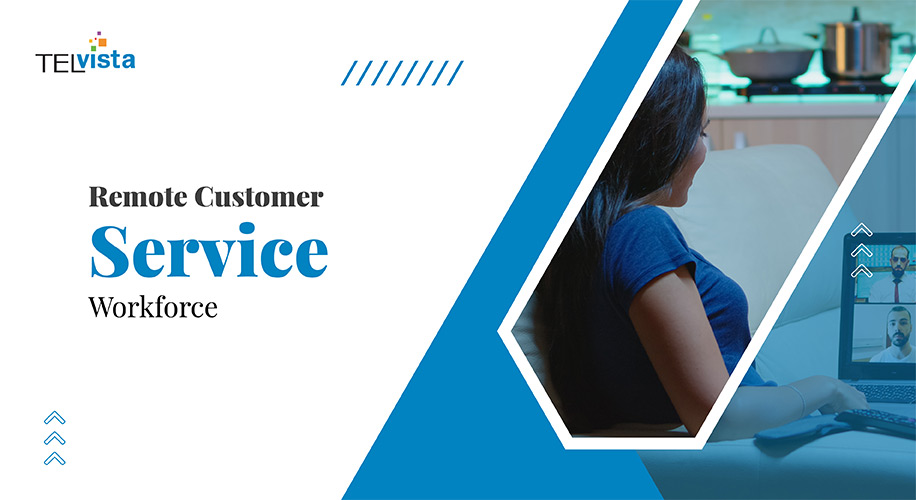Many employers still don’t take trends like The Great Resignation seriously and keep insisting for a return to the office. But as the Twitter debacle earlier this month proved, employees are extremely resistant when it comes to sacrificing remote work. Trends (and events) all point towards the same thing: remote work is here to stay. And this applies to remote customer service as well. This blog explores why the remote call center model is here to stay, and what that could mean for businesses.
Is Remote Customer Service Sustainable Post-Pandemic?
Like many other business units, customer service and support contact centers shifted to a remote model during the pandemic. But with the health crisis finally winding down, and many businesses calling for workers to return to the office, should remote customer service workforces be completely discarded? While a significant number of businesses have always worked with offshore call centers, a permanently remote workforce somehow seems less appealing. Deciding whether a remote model is sustainable requires a very careful consideration of certain factors, including the following:
Employees Prefer Remote Customer Service Jobs
A large segment of the workforce prefers to work remotely, not just customer service professionals. In fact, many will continue to work from home (even if part-time) after the pandemic has ended. It offers unique advantages such as minimal downtime and lower absenteeism, and can prove extremely useful to companies that address sensitive customer needs, such as an IT support company. On the other hand, it can present serious challenges as well.
Notwithstanding, industry leaders like Twitter realized early on that remote work had great potential as a sustainable business model. Therefore, they chose to create a permanent remote working model. Ironically, following Twitter’s recent takeover, the new management attempted to reverse the work-from-home model. In response to the demand to return to the office, thousands of workers quit. This is a significant indication that many employees, including remote contact center service staff, will be resistant to a return to the office. And that remote contact centers may be here for good.
The Benefits of Remote Contact Centers
There is no denying that since 2020, there has been a very large percentage of customer service agents working remotely. But while the shift from in-office to remote workforces was a necessary response, it has also offered many unexpected benefits that have contributed to better contact center performance, including:
- Improved agent satisfaction rates
- Increase in overall customer satisfaction rates
- Improvements in first call resolution numbers
- Massive reductions in contact center operating costs
- Noticeable drops in agent absenteeism rate
- Reduced spending and agent expenses
- Significantly lowered agent turnover or attrition
- Easier access to diverse global talent pools
- More opportunities to scale up agent workforce size
- Flexible timings that offer agents a better work-life balance
While all these benefits may not accrue to a business with a remote workforce, having customer service remote jobs as part of the mix can add to contact center performance. This should remain a key consideration for employers choosing between a remote workforce and a conventional one.
The Challenges That a Remote Contact Center Overcomes
Of course, many feel that remote work is still a fairly new model in terms of scale and technology. There are bound to be challenges and growing pains as it matures. However, specialized contact center service providers have leveraged a mix of technology and best practices to overcome many of these challenges. With the right technology, equipment, and process backing remote customer service jobs business can address several conventional risk factors including:
- Reducing the risks of security lapses and/or breaches
- Minimizing disruption due to regional internet outages
- Better workforce management to address disengagement or poor performance
- Streamlining onboarding and training for new hires
- Ease the transition for new hires to adopt company cultures and values
- Minimize the impact of in-home distractions and chores on call quality
- Fewer downtime risks with a strategically dispersed workforce
- Fewer complications with employee workforce management and monitoring
A remote working model for contact centers, therefore, can work as well as (if not better than) a conventional one. This is particularly true for outbound contact centers. But as an alternative model, it has several advantages over conventional contact center models. For employers, this means carefully weighing the pros and cons before discarding it as irrelevant. The remote working model for customer service functions may be here for good. And businesses wouldn’t want to forego the increased efficiency and customer satisfaction rates.
Frequently Ask Question
How to get a remote customer service job?
Look for companies that either have a remote customer service team, or a solutions provider that offers remote customer service models to businesses.
What is a remote customer service workforce?
A workforce (both onshore and offshore) that does not work onsite but works from remote locations using the internet and specialized software/equipment.
What does remote customer service mean?
Where the agents employed by a company for customer service and contact center needs are not based in the office but work remotely.
What is a remote customer service workforce representative?
A remote CS agent is based out of their home or a space that is not part of the conventional office. These agents can work using basic equipment like a laptop, an internet service, VoIP software, and basic headphone/mic equipment.




